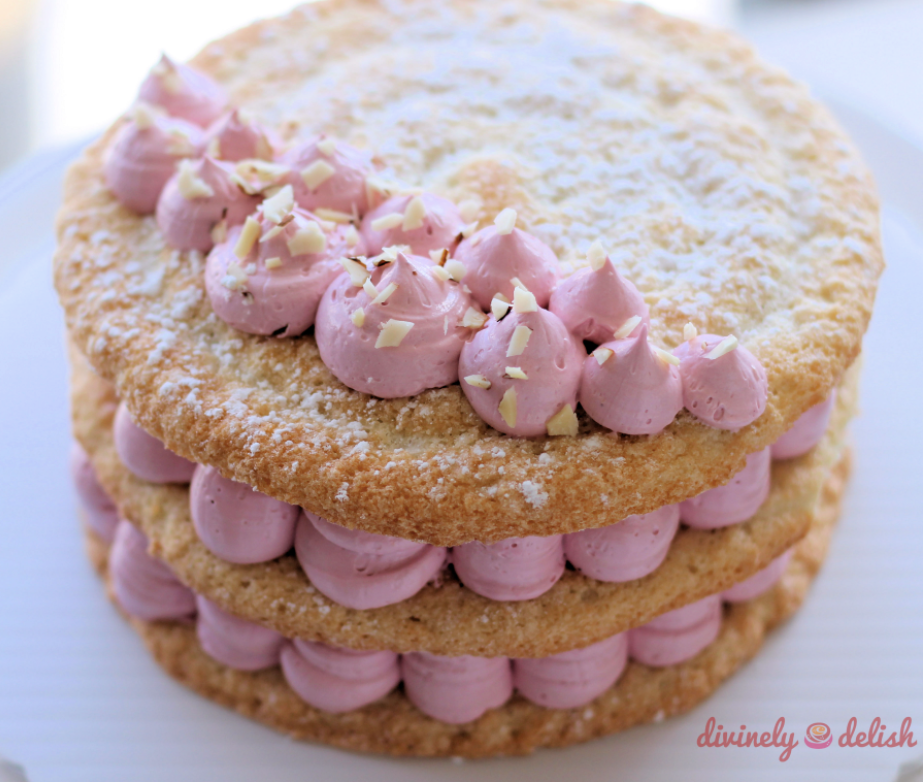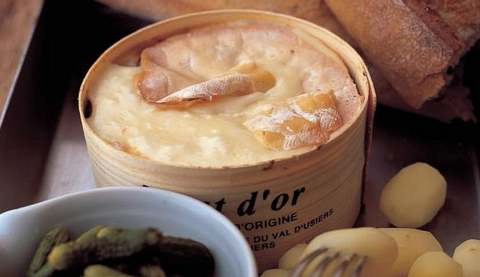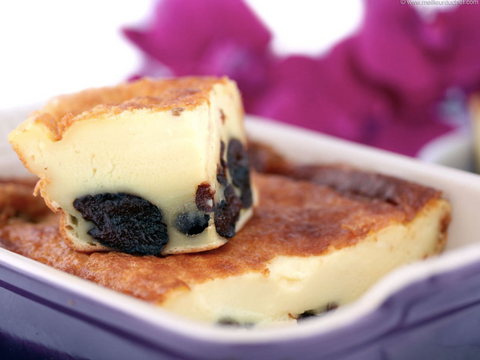You may have heard of French Dacquoise, but you may not know what it is. You’re not alone! French Dacquoise is a delicious dessert made of meringue and one of the most popular cakes in France. It’s not as well known in America yet but it is growing in popularity. Here are some of the highlights that make this cake so special:
- It’s very light
- It’s sweet, but not overly sweet like other desserts
- It doesn’t require any baking!
The cake is made up of layers of meringues; the French word for meringue is dacquoise. The top layer is usually decorated with nuts, chocolate, or fruit. The most popular nut used to decorate the cake is walnuts. This adds crunch and texture to an otherwise soft dessert. For example, if you are making a chocolate dacquoise then you can use grated chocolate on top to decorate it. If you want something more colorful, you can use different colored fruits like raspberries or strawberries instead!
The filling between each layer can be anything from whipped cream (like our recipe), ganache, or even buttercream frosting if you want something sweeter than usual.
A French Dacquoise is a variation of meringue and is served as a pastry. The pastry consists of layers of nut-meringue and whipped cream in between. In French cuisine, the two most common nuts used are almonds and hazelnuts, but walnuts can also be used. For this recipe, we decided to use hazelnut.
The nut-meringue is baked until it is crisp on the outside but chewy on the inside, giving the pastry its unique texture. Also, the pastry is typically not frosted because it is so rich that it can stand alone without frosting.
What does dacquoise mean?
Dacquoise is a French cake that is typically made with alternating layers of baked meringue, whipped cream or buttercream, and fruit. The cake can be made as one large round or sheet, or it can be split into individual cakes by using cookie cutters. The most common flavors are raspberry and hazelnut.
The word dacquoise is French, and the name of the dessert comes from the town of Dax in France. The cake was supposedly invented in the 17th century by a man named Clément Lassagne, who was serving at the court of Louis XIII. One year, his job was to create a dessert to honor the Duke of Aquitaine (whose name was Henri de La Tour), who had just returned from battle. Lassagne created a dessert with four layers: almond meringue, chocolate ganache filling, crème Chantilly, and candied violets on top. He cut the cake into diamond-shaped pieces to resemble diamonds from Aquitaine (located in southwestern France). However, this story may be apocryphal since many others claim that they invented the cake before Lassagne's supposed creation date.
Difference between dacquoise and Japonaise
The basic difference between dacquoise and Japonaise is that the former is made with almonds and the latter with hazelnuts.
- Dacquoise is a French cake that consists of several layers of meringue interspersed with whipped cream or buttercream. It can be flavored in many ways, including chocolate, coffee, vanilla, pistachio, hazelnut, and praline. The cake gets its name from the town of Dax in southwestern France. It's typically served at room temperature.
- Japonaise is an Italian cake that also consists of layers of meringue interspersed with buttercream or sweetened whipped cream. Although it resembles dacquoise, it's quite different. First, the meringue is made with beaten egg whites and ground hazelnuts rather than the almond flour used for dacquoise. Second, the cake gets its name from japonica — another term for rhododendron — because its shape resembles the flower. It's typically served chilled.
The word dacquoise is French and refers to a type of cake with a meringue base.
- Japonaise refers to a type of pastry dough that often includes ground almonds or hazelnuts. The term is also sometimes used to refer to a cake made from this type of dough.
- To make Japanese, you mix the eggs, sugar, and groundnuts, sift the flour into it, add melted butter and bake at 350 degrees F for 10 minutes. To make a dacquoise, you beat egg whites and sugar together until stiff peaks form and bake at 325 degrees F for 15 minutes.
- Dacquoise is usually used as layers in cakes; there's no reason you couldn't use it in place of the japonaise if you're making one of those cakes. Otherwise, I wouldn't recommend either one as a substitute for the other; they're too different.
Origin of dacquoise
Dacquoise is a French dessert made of nuts and layers of meringue. It may be filled with whipped cream and/or jam. It is often used as a base for a torte, with a filling of buttercream or ganache.
The name means "from Dax". The town of Dax, in France, was famous for its almond and hazelnut cakes long before it became famous as a spa resort in Roman times. Originally "dacquoise" referred to a cake baked with almonds, hazelnuts, or macaroons, but it now refers only to the baked meringue layer.
In some countries, the word dacquoise can also refer to an almond-flavored biscuit similar to a macaroon but smaller and rounder.
- Dacquoise, a French cookie that's like a cross between meringue and sponge cake, is made with finely ground nuts and egg whites. You can make it with almonds, hazelnuts, or pistachios. The word dacquoise) comes from the name of a town in southwestern France, Daquoise.

There are two parts to dacquoise: the nuts and the meringue. You can buy already ground nuts at most supermarkets or food stores. Otherwise, you'll need a food processor to grind the nuts yourself.
- For the meringue, separate your eggs and beat the whites until stiff peaks form when you lift the beaters. Then mix in sugar one tablespoon at a time until all of it is incorporated, and continue beating for another minute until all the peaks stand straight up when you pull out the beaters. Fold in the ground nuts by hand.
- Spread out your mixture on a baking sheet lined with parchment paper, then put it in an oven preheated to 250 degrees F and bake for about an hour. Once baked, let cool before cutting into squares or triangles for serving!
How do you store dacquoise?
The ideal temperature for storing dacquoise is in the freezer or refrigerator. You can keep it for about a week in the refrigerator and for about two months in the freezer. Dacquoise can still be consumed after these times, but its quality will have deteriorated.
The best way to store dacquoise is by placing it in an airtight container with baking paper between each layer of dacquoise so that they don't stick together. The container should be placed upright, as this will prevent them from being crushed.
If you have made a dacquoise with a filling (such as cream), then it should only be kept in the refrigerator, and not the freezer. This is because freezing the filling may cause it to separate after thawing.
It doesn't matter if you put the dacquoise on a plate before wrapping it up in a plastic wrap and placing it into an airtight container. Be sure to remove any excess air before sealing the container to help prolong shelf life.
- Dacquoise is a French dessert made with layers of meringue with cream or buttercream in between. It can be made in any shape, although it is most often baked in a circle or rectangle and cut into slices after baking.
- One of the great things about dacquoise is that it will keep for quite a long time. The meringue shells are crisp, but since there's no fruit to go bad, you don't have to worry about the cake going stale or moldy.
- Dacquoise should be kept refrigerated after filling it and letting it set up. It's best if you store it in an air-tight container so that the meringues stay crisp and don't absorb any odors from other foods in the refrigerator.
- You can keep dacquoise for four or five days at most before eating it. If your recipe has fruit in it, you may want to use it within two or three days instead, since the fruit will lose some of its flavor and texture after a time
Which is a light cake made of meringue and flour?
A macaron is a light cake made of meringue and flour. The name is derived from the Italian word "Maccarone" or Maccarone, the meringue. The cake is a form of sweet dessert that is typically baked. In their oldest forms, cakes were modifications of bread, but cakes now cover a wide range of preparations that can be simple or elaborate, and that share features with other desserts such as pastries, meringues, custards, and pies.
The most commonly used cake ingredients include flour, sugar, eggs, butter or oil or margarine, a liquid, and leavening agents, such as baking soda or baking powder. Common additional ingredients and flavorings include dried, candied, or fresh fruit, nuts, cocoa, and extracts such as vanilla, with numerous substitutions for the primary ingredients. Cakes can also be filled with fruit preserves or dessert sauces (like pastry cream), iced with buttercream or other icings, and decorated with marzipan, piped borders, or candied fruit.
The cake is often served as a celebratory dish on ceremonial occasions, such as weddings, anniversaries, and birthdays. There are countless cake recipes; some are bread-like; some rich and elaborate; many are centuries old.
How long can you store dacquoise?
It depends on the filling. Since a dacquoise is made with meringue, it's very easy to keep for a week or so. They're best eaten within a day of being made, but if you store them in an airtight container where they won't get squished, they'll stay crisp for several days.
If your filling is something that doesn't keep well (for example, fresh fruit) you should use it up within a day or two. Other fillings will keep longer.
Hazelnut Almond Dacquoise
Hazelnut almond dacquoise is a classic pastry recipe. It's made of layers of hazelnut meringue, which are filled with cream and covered with chocolate ganache. The result is a decadent cake that's perfect for special occasions. It's typically served by itself, but it can also be used in other recipes, such as the cherry charlotte. The bottom layer of this tart is called a dacquoise. Dacquoise is a classic French dessert made by whipping egg whites to soft peaks and folding in almond or hazelnut meal, flour, and sugar. The mixture is then piped onto a baking sheet and baked until crisp.
When you make the dacquoise for this tart, the batter will fill up your whole baking sheet. Don't worry about spreading it out — it'll spread on its own!
Lemon dacquoise cake
Lemon dacquoise is a dessert made from layers of almond and meringue cake, lemon curd, and whipped cream. Dacquoise is a meringue cake made with ground nuts, often almonds or hazelnuts, incorporated into the meringue.
- The word Dacquoise comes from Dax in Gascony. The name is used for both a type of cookie or biscuit and for a dessert consisting of layers of such cookies. In the latter sense, it is similar to a millefeuille or the French gâteau St. Honoré.
- A dacquoise is a dessert cake made with layers of almond meringue and whipped cream or buttercream, sometimes with nuts. The name comes from the Occitan word dacquoise, which means something like "of Dax", a town in France. The French version is made with hazelnuts and can be eaten on its own or as part of a dessert. In Germany, there are also versions with cinnamon.
- A lemon dacquoise is made with lemon zest in the meringue and whipped cream flavored with lemon zest for the filling.
This is a fancy French dessert. Traditionally, it’s made with a meringue layer that’s baked, then filled with creme mousseline, which is also known as pastry cream. I’ve simplified my version quite a bit and opted for a combination of whipping cream and mascarpone cheese. It’s very creamy and delicious!




